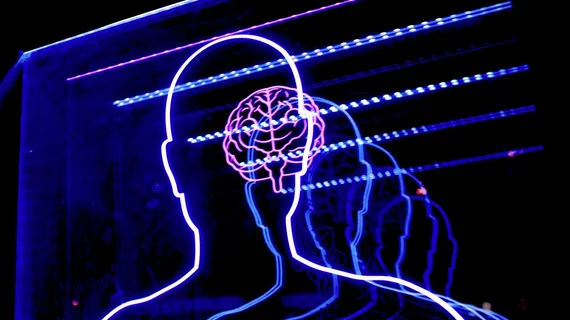Skyrocketing use of emergency brain imaging is out of step with overall ED trends
U.S. healthcare providers have dramatically escalated their use of brain imaging to assess patients for seizures and epilepsy in the emergency department since 2006. And yet at the same time, the frequency of ED visits increased more modestly, or even dropped in some patient populations, researchers reported Thursday.
For instance, annual ED trips among adult patients climbed 8.2% during the eight years ending in 2014, while head CT use for the two indications leapt nearly 95%. Brain MRI increased 400% during the same period and electroencephalography climbed 220%, while brain MRI skyrocketed 300%, Emory University imaging experts reported in JACR.
The results raise questions about imaging overuse and healthcare spending, with seizures accounting for just 1% of adult ED visits and 2% among children, tallying $500 billion each year.
“In our study, we found significantly higher overall imaging utilization in both pediatric and adult patients presenting with clinical diagnoses of seizure rather than epilepsy,” Kristie Yang, MD, a resident physician at Atlanta-based Emory, and colleagues wrote Aug. 20. “A prior institutional study showed that 46% of adult patients who presented to EDs with epilepsy received new imaging during those encounters. Of those who received new neuroimaging, fewer than 3% resulted in acute changes in their clinical management, suggesting that ED imaging may be overutilized in patients with epilepsy,” the team added.
Yang and colleagues reached their conclusions using data from more than 9 million patients (27% pediatric, 73% adult), recorded in the largest publicly available all-payer ED databases in the U.S. Overall, pediatric emergency visits dipped 1.2% among children and 8.2% for adults between 2006 and 2014. At the same time, head CT use climbed 27.8%, EEG 220% and MRI 300%. Diving in further, Yang and colleagues found that neuroimaging use was higher in both subgroups for male patients and those with private insurance, higher median household incomes, or living in the Northeast and South.
Patients treated at nonteaching hospitals also saw a higher rate of brain imaging than those treated in academic medical centers, the authors noted.
“The observed increased use of neurodiagnostic testing utilization at nonteaching hospitals could be due to variations in adherence to evidence-based guidelines,” Yang et al. hypothesized. “Specifically, physicians practicing at nonteaching hospitals have been reported to be more likely to believe that guidelines are too restrictive or rigid to apply to individual patients.”
The increased availability of CT, MRI and EEG may be another reason for the uptick. American College of Radiology Appropriateness Criteria do recommend head CT and brain MRI for seizure and epilepsy assessment. But things are much fuzzier around EEG, with little consistency among centers.
You can read much more from the Emory analysis in the Journal of the American College of Radiology here.

